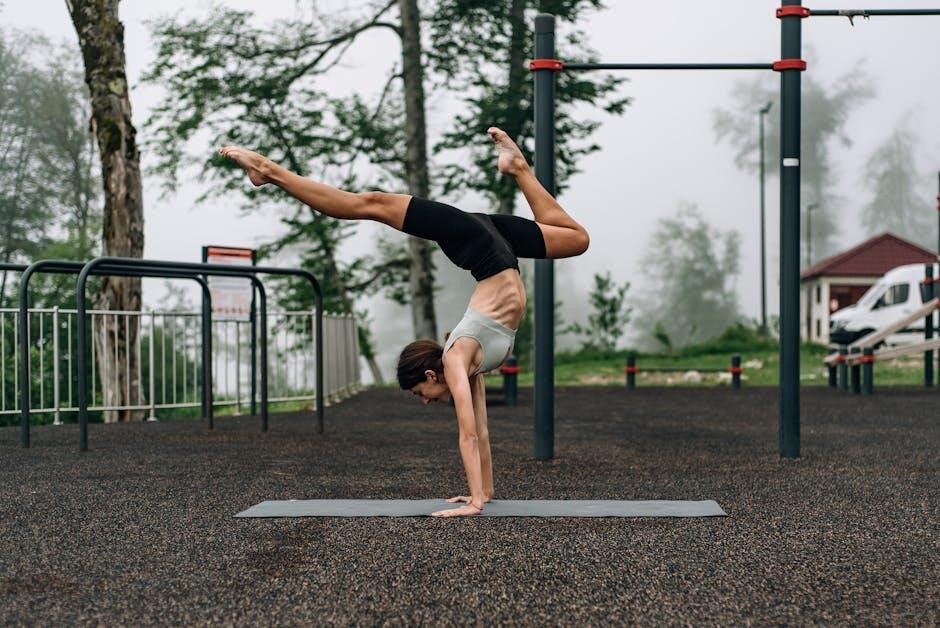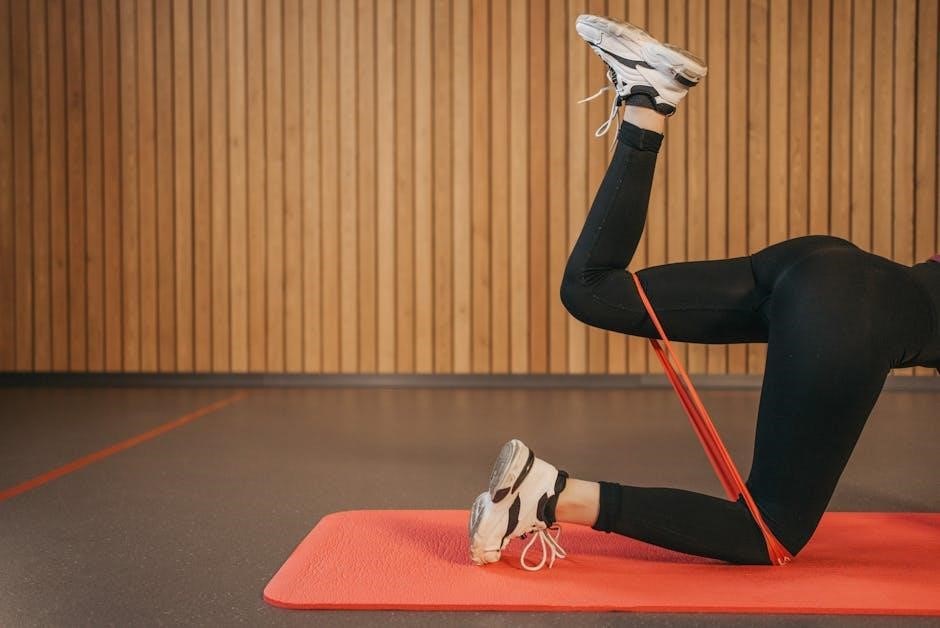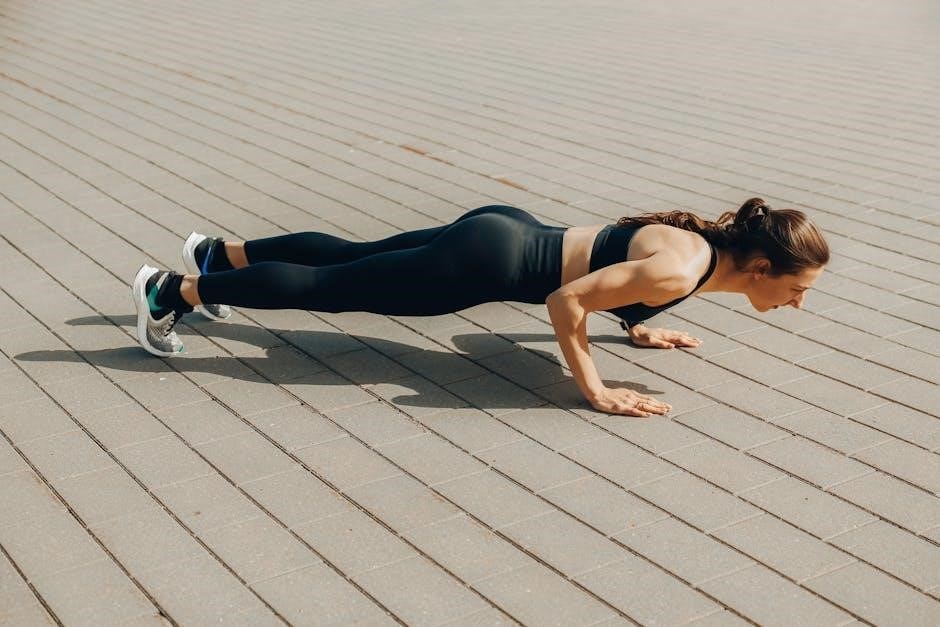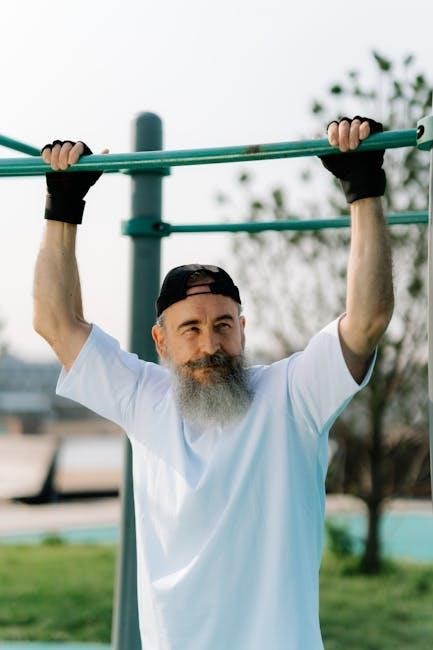
Calisthenics is a form of strength training using body weight to build strength, endurance, and flexibility. It requires minimal equipment, making it accessible to everyone. Popular worldwide, it combines functional movements that improve overall fitness and mental discipline. Perfect for all fitness levels, calisthenics promotes holistic health and athleticism without gym memberships. Its versatility and effectiveness have made it a favorite for those seeking a balanced, low-cost workout routine. Discover how this timeless training method can transform your body and mindset. Start your journey today and experience the benefits firsthand.
What is Calisthenics?
Calisthenics is a form of strength training that uses body weight as resistance to develop strength, endurance, mobility, and balance. It involves functional movements like pushing, pulling, and lifting, which mimic real-life activities. Unlike weight training, calisthenics requires minimal equipment, making it accessible to anyone, anywhere. It combines elements of gymnastics and resistance training, focusing on mastering one’s own body weight. This holistic approach improves overall fitness, enhances coordination, and builds mental discipline. Calisthenics is versatile, catering to all fitness levels, from beginners to advanced athletes, and can be adapted to achieve specific goals, whether strength, flexibility, or cardiovascular health. Its simplicity and effectiveness make it a popular choice for those seeking a balanced and sustainable workout routine.
Benefits of Calisthenics
Calisthenics offers numerous benefits, including improved strength, endurance, and mobility. It enhances flexibility and balance while boosting cardiovascular health. Unlike weight training, it requires minimal equipment, making it cost-effective and accessible to everyone. Calisthenics exercises engage multiple muscle groups simultaneously, promoting efficient calorie burning and full-body conditioning. It also challenges mental discipline, fostering resilience and focus. Suitable for all fitness levels, calisthenics can be adapted to meet individual goals, whether strength building or weight loss. Its functional movements prepare the body for real-life activities, making it a practical choice for overall fitness. Additionally, calisthenics improves coordination and posture, contributing to better overall health and well-being. Its versatility and effectiveness make it a popular choice for those seeking a balanced and sustainable workout routine.
Why Calisthenics is Popular Today
Calisthenics has gained immense popularity due to its accessibility and effectiveness. With minimal equipment required, it appeals to those seeking cost-effective workouts. Social media platforms like TikTok, with billions of views on calisthenics-related content, have further fueled its rise. The focus on body control, functional movements, and full-body exercises resonates with individuals aiming for holistic fitness. Additionally, calisthenics challenges both physical and mental limits, making it a preferred choice for building strength, endurance, and mental discipline. Its versatility allows people of all fitness levels to adapt exercises to their goals, whether for weight loss, muscle building, or overall well-being. This timeless training method continues to attract those seeking a practical, efficient, and inspiring way to stay fit.

Full List of Calisthenics Exercises
Calisthenics exercises include push-ups, squats, pull-ups, dips, lunges, planks, and more. These movements target strength, flexibility, and endurance. Find comprehensive lists in downloadable PDF guides.
Upper Body Exercises
Calisthenics offers a variety of effective upper body exercises that build strength and endurance. Push-ups target the chest, shoulders, and triceps, while pull-ups and chin-ups focus on the back and arms. Dips are excellent for building tricep and shoulder strength. Inverted rows and pseudo planches are great for engaging the lat muscles and improving core stability. Plank variations, such as shoulder taps and side planks, enhance core strength and overall upper body stability. These exercises are functional and require minimal equipment, making them accessible for all fitness levels. By incorporating these movements into your routine, you can achieve a strong, balanced upper body. Explore detailed exercise lists and variations in downloadable PDF guides for a comprehensive workout plan.
Lower Body Exercises
Calisthenics provides a wide range of lower body exercises that enhance strength, flexibility, and coordination. Squats, lunges, and glute bridges target the legs and hips, improving overall lower body power. Calf raises and step-ups are excellent for building ankle and shin strength. Pistol squats and single-leg deadlifts challenge balance and stability, while lateral lunges and side splits enhance mobility. These exercises are functional and require minimal equipment, making them ideal for all fitness levels. By incorporating these movements into your routine, you can build strong, agile legs and hips. Detailed exercise lists and variations can be found in downloadable PDF guides, offering a comprehensive approach to lower body training. Explore these resources to elevate your workout and achieve your fitness goals.

Core Exercises
Calisthenics core exercises are essential for building stability, balance, and overall athleticism. Planks, whether standard, twisted, or single-leg, strengthen the abdominals and improve posture. Dragon flags and hanging leg raises target the lower abs and obliques, enhancing definition and strength. Superman holds and bird dogs work the lower back and core muscles, promoting a strong, injury-resistant spine. Russian twists and bicycle crunches are dynamic exercises that engage the entire core while improving mobility. These exercises are versatile and can be modified to suit different fitness levels; Detailed lists and variations are available in downloadable PDF guides, ensuring a comprehensive core workout plan. Strengthening your core with these exercises will enhance your overall physical performance and stability in all calisthenics movements. Explore these resources to build a resilient and powerful core.
Full-Body Exercises
Full-body calisthenics exercises engage multiple muscle groups simultaneously, offering an efficient and effective way to improve overall fitness. Burpees, a combination of squats, push-ups, and jumps, are a classic example, targeting the arms, legs, and core. Mountain climbers and jump squats are excellent for cardiovascular endurance and lower body strength. Plunge jumps and tuck jumps enhance explosiveness and coordination. These exercises are versatile, suitable for all fitness levels, and can be modified to increase difficulty. Detailed lists and workout plans, including variations, are widely available in downloadable PDF guides. Incorporating these exercises into your routine ensures a comprehensive full-body workout, improving strength, endurance, and agility. Explore these resources to create a well-rounded and challenging training program tailored to your goals.

Calisthenics Workout Plans
Calisthenics workout plans are structured routines that combine various exercises to build strength, endurance, and mobility. They are progressive, catering to all fitness levels, and are often available as printable PDF guides for easy reference. These plans typically include exercises like push-ups, squats, and lunges, with variations to suit different goals and abilities. Whether you’re a beginner or an advanced athlete, a well-designed calisthenics workout plan can help you achieve consistent progress and visible results. Explore these plans to create a comprehensive and effective training regimen tailored to your fitness journey.
Beginner Workout Plan
A beginner-friendly calisthenics workout plan focuses on foundational movements to build strength and coordination. Start with 3 sessions per week, targeting upper body, lower body, and full-body exercises. Begin with basic moves like push-ups, squats, and lateral lunges. Incorporate core-strengthening exercises such as planks and glute bridges to improve stability. Aim for 3 sets of 10-15 repetitions per exercise, gradually increasing as you progress. Warm up with light cardio and stretching to prevent injuries. A printable PDF guide can help you stay organized and track your progress. Consistency is key, so commit to a routine and adjust as your fitness level improves. This structured approach ensures a safe and effective introduction to calisthenics training.
- Workout Schedule: 3 days per week
- Focus: Foundational exercises
- Key Exercises: Push-ups, squats, planks, and lunges
Intermediate Workout Plan
For intermediate trainees, the calisthenics workout plan intensifies with more challenging exercises and increased volume. Aim for 4-5 sessions per week, splitting routines into upper body, lower body, and full-body days. Incorporate dynamic movements like pull-ups, dips, and pistol squats. Add variations such as incline push-ups, single-leg squats, and weighted exercises using a backpack. Core workouts should include advanced moves like dragon flags and side planks. Each session should consist of 4-6 exercises, with 4 sets of 8-12 reps. Use a printable PDF guide to structure your workouts and track progression. Focus on improving form and endurance while gradually increasing difficulty to avoid plateaus. This plan builds strength, balance, and coordination for a well-rounded fitness level.
- Frequency: 4-5 times per week
- Focus: Increased intensity and complexity
- Key Exercises: Pull-ups, dips, pistol squats
Advanced Workout Plan
An advanced calisthenics workout plan is designed for those who have mastered intermediate exercises and are ready for high-level challenges. Focus on complex movements like muscle-ups, front levers, and single-arm pull-ups. Train 5-6 times per week, splitting routines into upper body, lower body, full-body, and core days. Incorporate explosive power exercises such as box jumps and clapping push-ups. Use isometric holds like the planche and human flag to build strength and control. Each workout should include 5-7 exercises, with 5 sets of 5-8 reps. Utilize a printable PDF guide to organize and track your progress. Emphasize skill mastery and intensity to push your limits and achieve elite-level fitness. This plan is for those committed to advanced strength, flexibility, and athleticism.
- Frequency: 5-6 times per week
- Focus: Mastery of complex movements
- Key Exercises: Muscle-ups, front levers, planche

Calisthenics for Different Fitness Levels
Calisthenics is adaptable to all fitness levels, offering scalable exercises for beginners, intermediates, and advanced athletes. Its versatility ensures everyone can progress at their own pace, fostering continuous improvement and engagement. Whether you’re just starting or aiming for elite-level strength, calisthenics provides a pathway to achieve your goals with minimal equipment and maximal results. This accessibility makes it a universal fitness choice, promoting strength, flexibility, and endurance for individuals of all backgrounds and abilities. Embrace calisthenics to transform your fitness journey, regardless of where you currently stand. The scalability ensures lasting growth and motivation. Start your personalized calisthenics journey today and witness the transformative power of bodyweight training. The exercises are tailored to suit every fitness level, from basic moves like push-ups and squats to advanced skills like muscle-ups and planches. With progression techniques, anyone can gradually increase difficulty, making calisthenics a lifelong fitness solution. The key is consistency and gradual overload, allowing the body to adapt and strengthen over time. Calisthenics breaks down barriers, proving that fitness is attainable for everyone, anywhere, without the need for expensive equipment or gym memberships. Discover how this accessible method can empower your fitness journey, catering to your unique goals and abilities. The beauty of calisthenics lies in its inclusivity and effectiveness, making it a preferred choice for fitness enthusiasts worldwide. Begin with foundational movements and evolve as your strength and confidence grow. The journey is personal, and calisthenics provides the tools to succeed at every stage.
Calisthenics for Beginners
Calisthenics is an excellent starting point for beginners, as it relies on bodyweight exercises that build strength, flexibility, and coordination. Start with foundational movements like push-ups, squats, lunges, and planks. These exercises are simple yet effective, requiring no equipment and minimal space. For those new to fitness, calisthenics provides a gradual learning curve, allowing you to build confidence and strength over time. Focus on mastering proper form to avoid injuries and maximize results. Begin with shorter workouts and progressively increase intensity as you adapt. The versatility of calisthenics ensures that anyone can start their fitness journey, regardless of their current fitness level. With consistency and patience, beginners can quickly see improvements in their overall health and athleticism. Embrace calisthenics as a gateway to a stronger, healthier you.
Calisthenics for Intermediate Trainees
For intermediate trainees, calisthenics offers a wide range of challenging exercises to further develop strength, endurance, and coordination. At this level, you can introduce more complex movements such as pull-ups, dips, and single-leg squats. These exercises not only build muscle but also enhance balance and overall athleticism. It’s important to focus on progression and variation to continue seeing improvements. Incorporating exercises like pistol squats or inverted rows can add variety and challenge to your routine. For a comprehensive list of intermediate calisthenics exercises, refer to detailed PDF guides that outline progressions and workout plans tailored to your fitness level. These resources provide structured routines to help you advance your skills effectively.
Calisthenics for Advanced Athletes
Advanced athletes can push their limits with complex calisthenics exercises that demand superior strength, coordination, and control. Exercises like muscle-ups, planche variations, and single-arm pull-ups challenge even the most skilled practitioners. These movements require mastery of fundamental techniques and a strong foundation in strength and mobility. For those seeking detailed exercise lists and progressions, numerous PDF guides are available online, offering structured routines tailored to advanced levels. These resources often include variations of dips, inverted rows, and explosive movements like clapping push-ups. By incorporating these advanced exercises into their routines, athletes can refine their skills, enhance performance, and achieve new levels of physical prowess. Embrace the challenge and elevate your training with these sophisticated calisthenics techniques.

Progression and Variation in Calisthenics
Progression in calisthenics involves advancing from basic to complex movements, while variation introduces modifications to suit different fitness levels. Both strategies enhance engagement and prevent plateaus.
How to Progress in Calisthenics
Progressing in calisthenics involves mastering fundamental movements before advancing to more complex exercises. Start with basic exercises like push-ups and squats, ensuring proper form. Gradually increase difficulty by adding reps, sets, or time under tension. For example, move from knee push-ups to standard push-ups, then to more challenging variations like diamond push-ups. Similarly, progress pull-ups by using resistance bands or assisted reps. Decrease rest periods between sets to boost endurance. Incorporate plyometric movements, such as jump squats, to enhance power. Focus on consistency and patience, as progression takes time. Track your workouts to monitor improvements and adjust your routine accordingly. This structured approach ensures steady growth and avoids plateaus.
Exercise Variations for Different Goals
Calisthenics exercises can be modified to suit various fitness goals, such as building strength, endurance, or improving mobility. For strength, focus on advanced movements like pistol squats, single-arm push-ups, or muscle-ups. To enhance endurance, increase reps or reduce rest periods in exercises like squats or push-ups. For mobility, incorporate dynamic stretches and flow movements, such as animal flows or lateral lunges. Progressions like assisted pull-ups or resistance band dips can help bridge gaps between skill levels. Adjusting sets, reps, and intensity allows customization for individual objectives. Experimenting with variations keeps workouts engaging and ensures continuous improvement. Tailor your routine to align with your specific goals for optimal results.

Calisthenics and Nutrition
Nutrition plays a vital role in calisthenics, fueling performance and recovery. A balanced diet rich in protein, carbs, and fats supports muscle growth and energy. Proper hydration and rest are also essential for optimal results and injury prevention.
Importance of Diet in Calisthenics
A well-balanced diet is crucial for calisthenics, as it fuels performance, recovery, and muscle growth. Protein is essential for repairing and building muscle tissue, while carbohydrates provide energy for workouts. Healthy fats support overall bodily functions. Proper hydration is also vital to maintain endurance and prevent fatigue. A diet rich in whole foods, fruits, and vegetables ensures optimal nutrition. Timing meals around workouts can enhance performance and recovery. Avoiding excessive sugar and processed foods helps maintain a lean, functional physique. A structured diet tailored to calisthenics goals supports strength, endurance, and mobility, making it a cornerstone of a successful training regimen.
Recovery and Rest
Recovery and rest are essential for calisthenics progression, as they allow muscles to repair and grow stronger. Overtraining can lead to injury or burnout, so listening to your body is crucial. Adequate sleep is vital, with 7-9 hours recommended nightly. Post-workout hydration and nutrition aid muscle recovery, while stretching and yoga can reduce stiffness. Rest days are not optional but a necessity, as they enable the body to adapt to the demands of training. Neglecting recovery can hinder progress and increase injury risk. Balancing intense workouts with proper rest ensures long-term success and sustained performance in calisthenics.


Calisthenics Safety Tips
Ensure proper warm-up and cool-down routines to prevent injuries. Focus on controlled movements and avoid overexertion. Use correct form to minimize strain and optimize results. Listen to your body to avoid exhaustion, stopping immediately if pain occurs. Create a safe workout environment free from hazards; Incorporate rest days to allow muscle recovery. Stay hydrated and maintain a balanced diet to support training. Prioritize quality over quantity to build strength safely and effectively. Professional guidance can enhance safety and progress. Always prioritize health and safety to enjoy long-term calisthenics benefits.
Warm-Up and Cool-Down Routines
A proper warm-up is essential to prepare your body for calisthenics exercises. Start with 5-10 minutes of light cardio, such as jogging or jumping jacks, to increase blood flow and heart rate. Dynamic stretches like arm circles, leg swings, and torso twists help improve flexibility and mobility. Incorporate muscle activations, such as glute bridges or planks, to engage core muscles. A well-structured warm-up reduces injury risk and enhances performance. For cool-down, focus on static stretches targeting major muscle groups, such as hamstrings, quadriceps, and chest muscles. Deep breathing exercises can also aid in relaxation and recovery. Always prioritize hydration and rest to support overall fitness goals. A consistent warm-up and cool-down routine ensures safer and more effective workouts.
Avoiding Injuries
Avoiding injuries in calisthenics requires attention to proper form, gradual progression, and listening to your body. Always warm up thoroughly before workouts and cool down afterward to prevent muscle strain. Focus on controlled movements and avoid pushing past pain or fatigue. Start with foundational exercises like push-ups or squats and progress slowly to more advanced movements. Ensure adequate hydration and nutrition to support recovery. Overtraining can lead to injuries, so rest days are crucial. Additionally, practice on safe surfaces and use equipment like pull-up bars or parallel bars that are sturdy and secure. Prioritizing technique over volume will help minimize injury risks and promote long-term progress in your calisthenics journey.

Creating a Calisthenics PDF Guide
Creating a Calisthenics PDF Guide allows you to organize exercises, workout plans, and tips in one place. Include a list of exercises, routines, and progression strategies for easy reference. Many free templates and guides are available online, making it simple to design a customizable plan tailored to your fitness goals. Ensure the guide is clear, visually appealing, and adaptable for different fitness levels. This resource will help you stay consistent and track your progress effectively.
How to Make a Printable Workout Plan
Creating a printable workout plan involves organizing exercises, routines, and nutritional advice in a clear format. Start by listing exercises, such as push-ups, squats, and pull-ups, and categorize them by muscle groups or fitness goals. Use a PDF template or design tool to arrange the content visually. Include warm-up routines, sets, reps, and rest periods for clarity. Add progression tips and safety guidelines to ensure safe and effective training. Finally, download or print the PDF and customize it based on individual needs. This structured approach helps maintain consistency and motivation, making your fitness journey more organized and achievable.
Where to Find Calisthenics PDF Resources
Calisthenics PDF resources are widely available online, offering comprehensive workout plans and exercise lists. Websites like The Fitness Tribe and Summerfunfitness provide free downloadable guides tailored for beginners and advanced trainees. Platforms like Gravgear and fitness blogs often share detailed PDFs with exercise progressions and nutrition tips. Additionally, social media platforms and fitness communities frequently post links to printable calisthenics resources. These PDFs are ideal for creating structured routines and tracking progress. They often include visual demonstrations and step-by-step instructions, making them accessible to all fitness levels. Explore these resources to find the perfect guide for your calisthenics journey and start achieving your fitness goals today.
Calisthenics is a powerful, versatile training method that offers countless benefits for strength, flexibility, and overall fitness. With its accessibility and effectiveness, it’s an excellent choice for everyone. Start your calisthenics journey today and embrace the transformative power of bodyweight training. Use the resources and PDF guides available to plan your workouts and track your progress. Whether you’re a beginner or an advanced athlete, calisthenics will help you achieve your fitness goals and unlock your full potential. The journey to a stronger, healthier you begins now.
Final Thoughts on Calisthenics
Calisthenics is a timeless and transformative form of training that builds strength, endurance, and mobility using bodyweight exercises. Its accessibility and versatility make it suitable for all fitness levels, from beginners to advanced athletes. By focusing on functional movements, calisthenics enhances overall fitness while promoting mental discipline and resilience. The importance of proper diet and recovery cannot be overstated, as they fuel progress and sustain long-term results. With countless resources, including PDF guides, available online, you can easily create personalized workout plans tailored to your goals. Whether you aim to improve strength, flexibility, or cardiovascular health, calisthenics offers a holistic approach to achieving a balanced and healthy lifestyle. Embrace the journey and unlock your full potential with calisthenics.
Encouragement to Start Your Journey
Starting your calisthenics journey is an exciting step toward improving your health and fitness. With countless resources available, including detailed PDF guides, you can easily find the perfect exercises and routines to suit your goals. Calisthenics is accessible to everyone, requiring minimal equipment, making it ideal for home workouts or outdoor sessions. The key to success lies in consistency and gradual progression. Begin with basic movements like push-ups, squats, and dips, then gradually incorporate more challenging exercises as you build strength and confidence. Remember, every small step is progress. Embrace the journey, stay motivated, and enjoy the transformative benefits of calisthenics. Your fitness journey is just a step away—start today and unlock a stronger, healthier you!